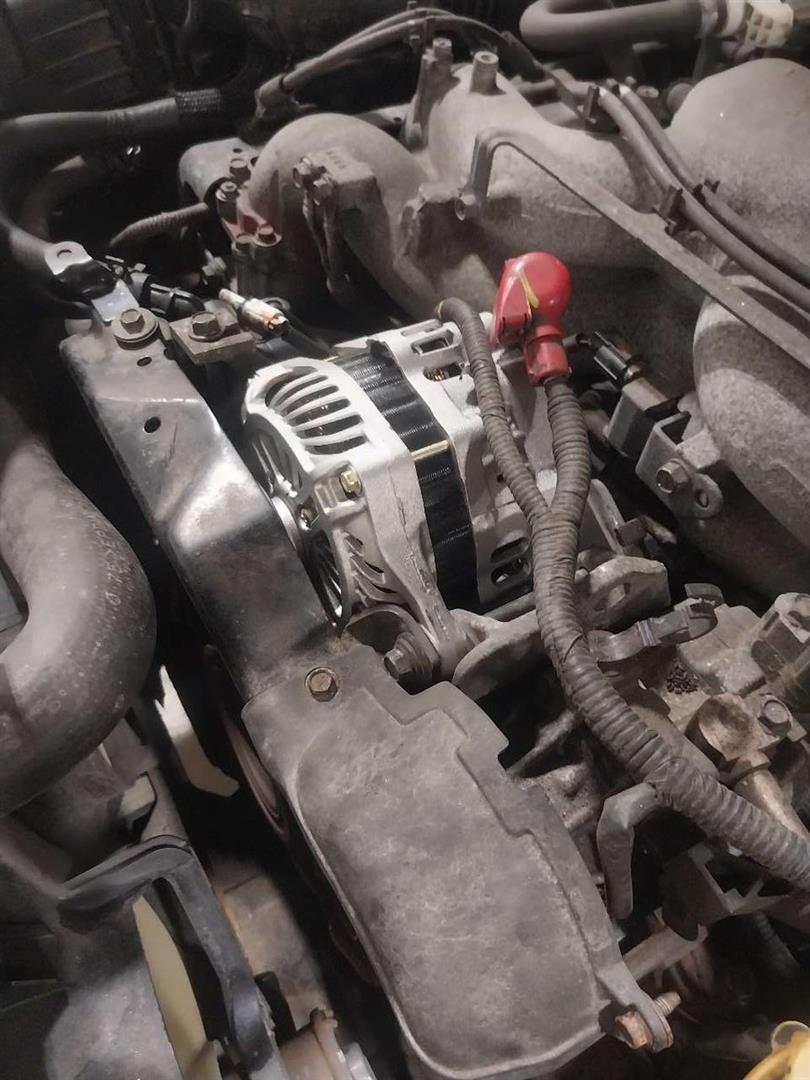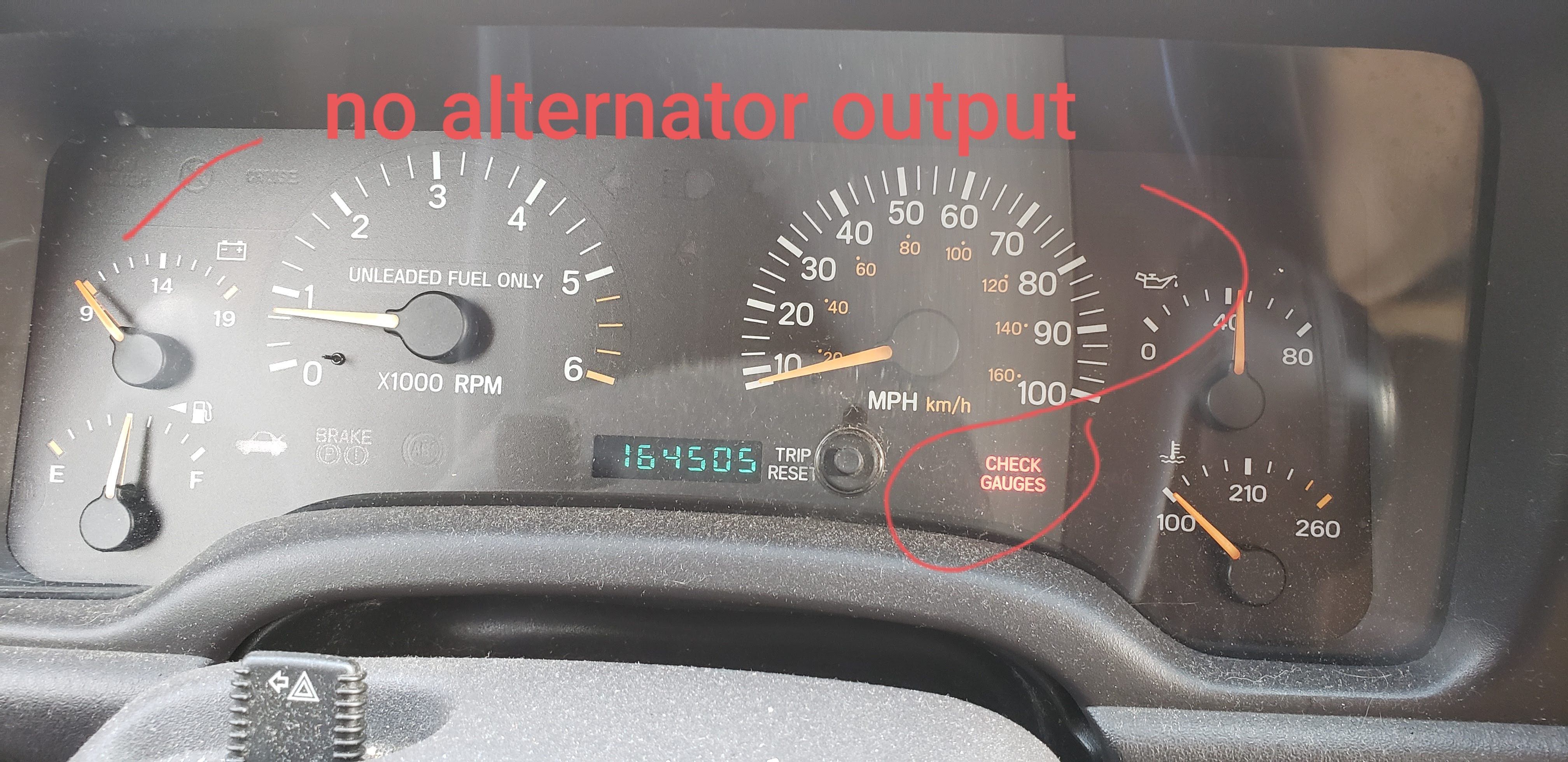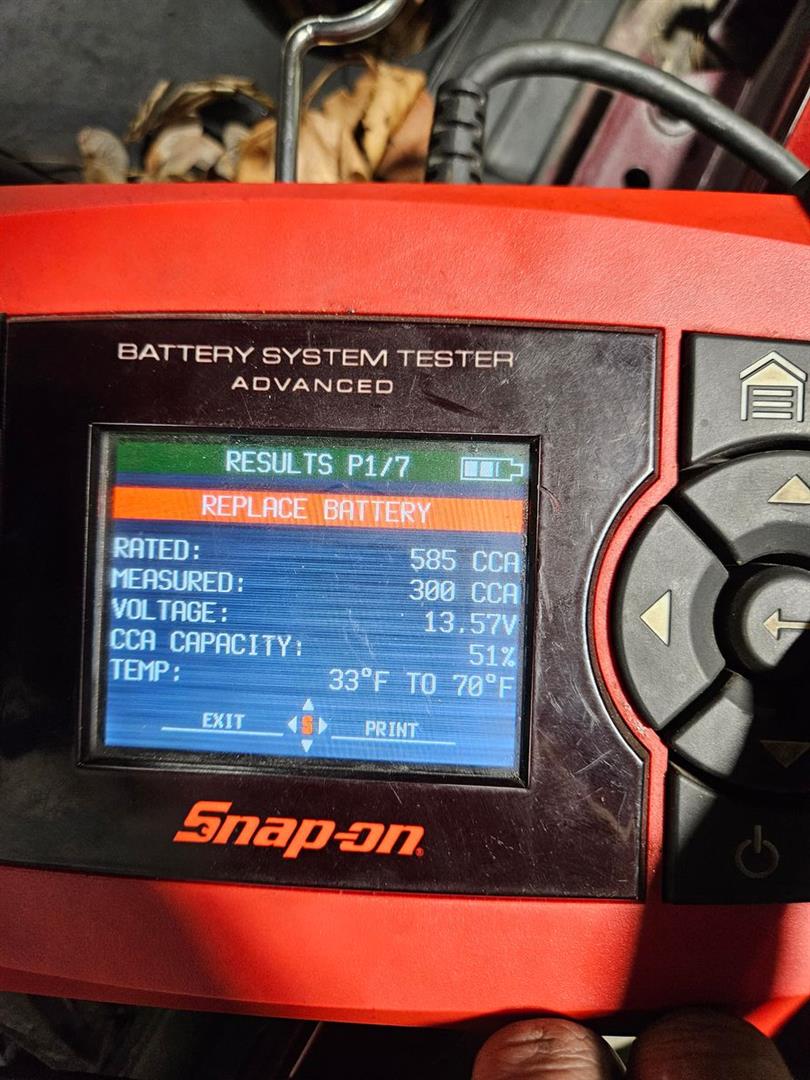Your Car’s Other Power Plant: The Alternator Explained
Introduction
When it comes to your vehicle’s power, the engine usually gets all the glory. But did you know your car has another power source under the hood? We’re talking about the alternator, a vital yet often overlooked component. The alternator is essentially your car’s on-board electrical generator. It supplies the electricity for your headlights, radio, power windows, and all the other accessories – and it keeps your battery charged up for the next start. In other words, once your engine is running, the alternator takes over as the main source of electrical power, while the battery gets a much-needed recharge. In this post, we’ll explain why the alternator is so important, how to spot signs of a failing alternator, and how modern alternators are smarter (and more computer-integrated) than ever. We’ll also discuss why proper testing is crucial before replacing an alternator.
What Does the Alternator Do?
An alternator’s job is to convert mechanical energy into electrical energy for your car. It’s driven by a belt connected to the engine, so as the engine runs, the alternator spins and generates electricity. This electrical power runs all your vehicle’s electronic systems and also charges the battery back up. In fact, the alternator is so important that without it, your battery would quickly drain and your car would stop running. The battery’s primary role is to start the engine; after that, the alternator shoulders the load of powering the ignition, lights, climate control, stereo, navigation, and more. It’s truly the unsung hero that keeps your car’s electrical system working.
connected to the engine, so as the engine runs, the alternator spins and generates electricity. This electrical power runs all your vehicle’s electronic systems and also charges the battery back up. In fact, the alternator is so important that without it, your battery would quickly drain and your car would stop running. The battery’s primary role is to start the engine; after that, the alternator shoulders the load of powering the ignition, lights, climate control, stereo, navigation, and more. It’s truly the unsung hero that keeps your car’s electrical system working.
It’s worth noting that the alternator itself gets its power from the engine via a drive belt (often called a serpentine belt). If that belt is worn or breaks, the alternator can’t spin – meaning no charging for the battery. That’s one reason why a broken belt can lead to sudden battery warning lights or overheating (since the same belt often drives the water pump too). Keeping that belt in good shape is part of maintaining a healthy charging system.
Signs of a Weak or Failing Alternator
How can you tell if your alternator might be struggling? There are a few common warning signs to watch for. Many of these symptoms happen because the alternator isn’t providing a steady charge anymore. Here are some things you might notice:
- Battery Warning Light: The dashboard battery icon (or “ALT”/“GEN” light) coming on is often the
 first clue. While it looks like a battery, this warning light usually indicates a problem somewhere in the charging system – which includes the alternator. If this light stays on while driving, or comes on intermittently, it’s telling you the alternator’s output is out of spec (too low, or sometimes too high). Don’t ignore it! It’s a sign to get your charging system checked.
first clue. While it looks like a battery, this warning light usually indicates a problem somewhere in the charging system – which includes the alternator. If this light stays on while driving, or comes on intermittently, it’s telling you the alternator’s output is out of spec (too low, or sometimes too high). Don’t ignore it! It’s a sign to get your charging system checked. - Dim or Flickering Lights: Because the alternator powers your car’s lights, a failing alternator can cause weird lighting issues. You might see your headlights or interior lights getting unusually dim or even too bright, or flickering between dim and bright. Inconsistent voltage from a bad alternator (or voltage regulator) is often to blame. If you rev the engine and the lights get brighter or dimmer abnormally, that’s a classic symptom of alternator trouble.
- Slow or Malfunctioning Accessories: Your car’s accessories – like power windows, electric seats, windshield wipers, radio, or heater fan – all require steady electrical power. An alternator on its way out may cause these accessories to slow down or stop working properly. For example, you might notice your windows roll up very slowly or your wipers creep along. In modern vehicles, the onboard computer may even start to shut off non-essential accessories (like the radio or heated seats) if the alternator isn’t keeping up, in order to conserve power for the engine. So, if multiple electrical things in your car seem weak or intermittent, the alternator is a prime suspect.
- Weak Battery or Trouble Starting: One of the most common results of alternator failure is a dead
 battery. If the alternator isn’t charging the battery, you’ll find the battery repeatedly drained and unable to start the car. You might jump-start the car successfully, but it then dies again shortly after – which points to the alternator not replenishing the charge. Additionally, as the battery charge gets lower, you may experience the engine cranking very slowly or even stalling while running. So, if your car is hard to start and the battery keeps dying, the alternator (and overall charging system) may be the culprit rather than the battery itself.
battery. If the alternator isn’t charging the battery, you’ll find the battery repeatedly drained and unable to start the car. You might jump-start the car successfully, but it then dies again shortly after – which points to the alternator not replenishing the charge. Additionally, as the battery charge gets lower, you may experience the engine cranking very slowly or even stalling while running. So, if your car is hard to start and the battery keeps dying, the alternator (and overall charging system) may be the culprit rather than the battery itself. - Strange Noises or Odors: Mechanical problems in the alternator can make themselves known through sound and smell. A failing alternator might produce a whining or growling noise from the engine bay, often due to bad bearings inside the alternator or a misaligned belt. You might hear this as a high-pitched whine that changes with engine speed. You should also pay attention to any burning smells. A slipping drive belt that’s not turning the alternator properly can create a burning rubber odor, and an overworked alternator or frayed wires can produce a hot electrical fire smell. If you catch a whiff of something burning under the hood or hear unusual squeals/whines, it could be the alternator on its last legs (or the belt slipping on the alternator’s pulley). These sensory warnings definitely merit a visit to the shop before bigger failures occur.
Any one of these signs is a good reason to have your charging system tested. Alternator issues can start gradually, but if ignored too long, you could end up with a car that won’t run at all. The good news is that these symptoms are usually noticeable enough that you can catch the problem early – avoiding that dreaded scenario where your car dies on the road.
Modern Cars Have “Smart” Alternators
You might be thinking, “I’ll just check the battery voltage or look at the dashboard gauge to know if my alternator is bad.” Be careful – today’s alternators are a lot smarter and more complex than those in older cars. In many modern vehicles, the alternator’s output is computer-controlled, meaning it doesn’t always charge at a constant rate. Instead, the car’s engine control unit (ECU) actively adjusts how much the alternator charges based on real-time needs. This type of setup is often called a smart alternator or smart charging system.
Why the change? One big reason is efficiency. By reducing the alternator’s workload when full charging isn’t needed, manufacturers can reduce the drag on the engine, improving fuel economy and lowering emissions. In a conventional alternator, an internal voltage regulator keeps the output around ~14 volts all the time. But in a modern smart alternator, the regulator is effectively the ECU – the alternator takes its cues from the car’s computer. For example, once your battery is fully charged, the ECU might tell the alternator to back off, letting voltage drop into the 12.5–13.5 volt range to lighten the load on the engine. Then, when you turn on a bunch of accessories or if the battery voltage drops, the ECU will ramp the alternator back up to a higher voltage. The alternator can even be temporarily switched off during moments like hard acceleration, and then kick back in when cruising or decelerating.
What this means in practice is that the voltage readings and behavior can vary widely in normal operation. It’s no longer a simple “14 volts = good, anything less = bad” situation. In fact, it can be perfectly normal to see as low as ~13.0 volts charging in some conditions, or to see the alternator charge intermittently (briefly not charging at all) if the system is managing the load. On the flip side, under heavy loads the system might allow voltages up around 15–15.5 volts for short periods, which would have seemed alarming in older cars but is by design in some new models. This wide range of “normal” behavior makes it tricky for the average car owner to know if something’s wrong. That’s why the car’s computer is actively monitoring everything.
Another aspect of this integration is that even the warning indicators are smarter. In older cars, a simple voltage drop would directly trigger the dash battery light. In modern cars, the battery/charging warning light is controlled by the computer, which decides when to illuminate it and often logs a trouble code when it does. So if an alternator or charging issue is detected, the car’s modules may store diagnostic codes that a technician can read with a scan tool. This complexity is all the more reason to have a professional diagnose charging problems – the days of just eyeballing the battery gauge or doing a backyard “disconnect the battery while running” test (please don’t do that on a modern car!) are long gone.
The Importance of Proper Testing and Diagnosis
Given how integrated the alternator is with your car’s electronics, it’s important not to jump to conclusions if you suspect a problem. Proper testing and diagnosis of the charging system is a must before replacing the alternator. Why? Because what looks like an alternator issue could actually be something else – and vice versa. For example, a weak or bad battery can mimic alternator problems, and a blown fuse or bad wiring connection can prevent an otherwise good alternator from charging the battery. The car’s computer itself could even be limiting the alternator based on bad data from a sensor. Simply swapping the alternator without checking these things might waste money and time.
At Accomplished Auto, we take a comprehensive approach to charging system diagnostics. Our technicians will test the battery, the alternator output, and the control signals to pinpoint the issue. We use specialized equipment (including digital testers and computer scan tools) to measure charging voltage and current under different conditions, and to check for any error codes the vehicle may have logged regarding the charging system. This is important because one basic voltage test isn’t always enough to tell the whole story. For instance, if we measure the battery and see low voltage with the engine running, that tells us the battery isn’t being charged – but we still need to determine why. It could be a failed alternator or a broken belt, or even the engine computer not commanding the alternator on. Thorough diagnostics help ensure we fix the real problem the first time.
Keep in mind that modern alternators can be more costly than the old ones, and sometimes they’re harder to access (some are buried under engine components). So you definitely want to be sure it actually needs replacement before going through that expense. As the saying goes, “test, not guess.” By properly diagnosing, we often save our customers from replacing a part unnecessarily. And if the alternator does need replacement, we’ll also check related parts – for example, if an alternator has failed due to a seized bearing, it may have damaged the drive belt, and you’d want to replace the belt at the same time to prevent a comeback issue.
When it comes time to replace a faulty alternator, you can trust Accomplished Auto to take care of you every step of the way. We offer both high-quality new and remanufactured alternators, ensuring the replacement matches your vehicle’s specifications—including any computer compatibility your model may require. For added peace of mind, all our work and parts are backed by our comprehensive 3-year/36,000-mile parts and labor warranty. Should you choose an alternator with a manufacturer’s warranty that extends beyond 3 years or 36,000 miles, the longer coverage applies to the part itself, while our labor warranty remains at 3 years or 36,000 miles. After installation, we always re-test your charging system to guarantee the battery and alternator are working together as they should, so your vehicle’s electrical needs are fully supported and you can hit the road with confidence.
Keeping Your Car Running with a Healthy Alternator
In summary, the alternator may not be as famous as the engine, but it’s absolutely critical to your car’s operation. Today’s cars rely on the alternator not just to keep the lights on, but to intelligently manage electrical power for efficiency and performance. Taking care of your alternator and charging system will help you avoid unexpected breakdowns and keep all those modern conveniences (and necessities like ignition and fuel systems) running properly. If you’ve noticed any of the warning signs we mentioned – flickering lights, odd noises, weak starting, or that pesky battery light on the dash – don’t hesitate to have your vehicle checked out. It’s much better to address a failing alternator before it leaves you stranded with a dead car.
Accomplished Auto is here to help. We pride ourselves on friendly, professional service for our customers in the Concord, NH area. If you’re experiencing electrical issues or have any concerns about your charging system, bring your vehicle in to us for a diagnosis. Our experienced technicians will gladly inspect your alternator, battery, and overall electrical system to identify any problems. Should you need an alternator replacement, we’ll recommend the right solution – whether a new unit with a lifetime warranty or a reliable remanufactured alternator – to get you back on the road with confidence.
Your vehicle’s alternator truly is the “other power plant” under the hood, quietly keeping everything running. By understanding its importance and staying alert to the signs of trouble, you can ensure this hard-working component gets the attention it deserves. Feel free to reach out to Accomplished Auto at (603) 226-6630 or visit us at 134A Hall St, Concord, NH, if you have any questions or need service for your alternator or any other part of your car. We’re always happy to educate and assist our customers – keeping you and your car charged up and driving smoothly is what we do best!